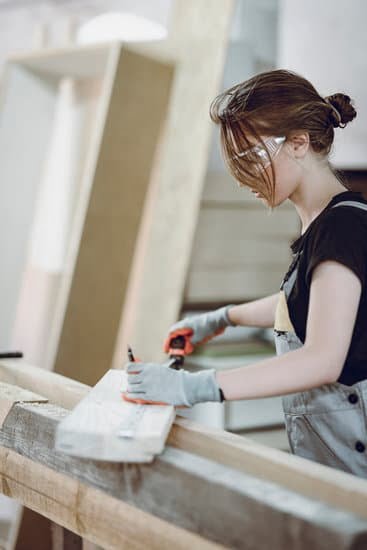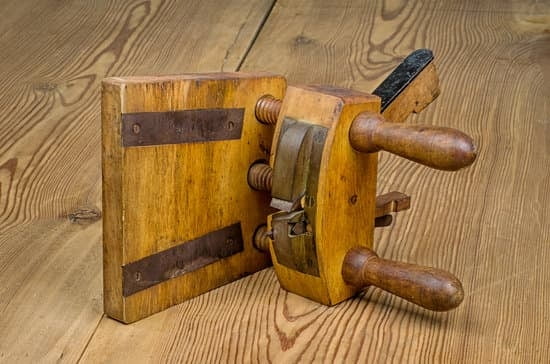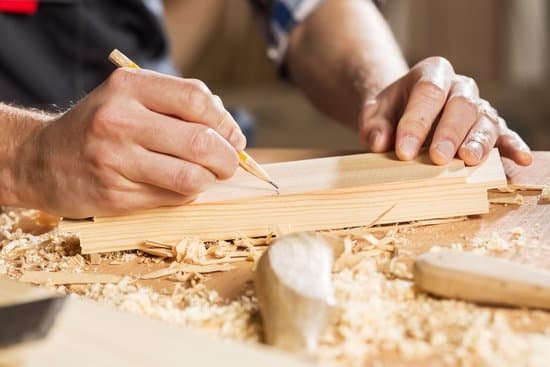Chess tables serve as both a functional piece of furniture and a captivating game board, making them a desirable addition to any home. The satisfaction of creating a handmade chess table from scratch is an appealing prospect for woodworking enthusiasts.
In this article, we will explore the benefits of building your own chess table and provide comprehensive woodworking plans to guide you through the process. Whether you’re an experienced woodworker or a novice looking for a new project, these chess table woodworking plans will help you create a timeless and personalized piece.
When it comes to chess tables, there is something undeniably special about having one that is handcrafted rather than store-bought. Not only does it showcase your woodworking skills, but it also adds a personal touch to your living space.
Understanding the appeal of building your own chess table is the first step towards embarking on this rewarding journey. In the following sections, we will delve into the history of chess tables, discuss the various types of wood suitable for building a chess table, outline the essential tools needed for woodworking, and provide detailed step-by-step plans for creating your very own chess table.
The process of designing and constructing a chess table can be as much about creativity and self-expression as it is about function. By opting to build your own chess table, you have the freedom to choose the type of wood that resonates with you, design unique patterns or inlays, and tailor every aspect to meet your aesthetic preferences.
With our comprehensive woodworking plans and guidance on choosing the right materials and techniques, you’ll be well-equipped to craft a beautiful and enduring piece that reflects your individual style and craftsmanship.
History of Chess Tables
Chess tables have a long and storied history, dating back to the medieval times when the game of chess gained popularity among European nobility. The earliest known chess tables were intricately carved and adorned with ornate designs, reflecting the high regard in which the game was held. Throughout history, chess tables have been regarded as symbols of refinement and intellect, often gracing the homes of scholars and aristocrats.
Famous chess tables throughout history include the Lewis Chessmen, a collection of elaborately crafted chess pieces found on the Isle of Lewis in Scotland. These iconic pieces are believed to date back to the 12th century and are an enduring symbol of medieval craftsmanship and artistry. Additionally, the Selenus Chess Table, created in 1616 by Peter Marshall for Emperor Rudolf II of Germany, is another notable example of a historic and exquisite chess table.
The significance of chess tables extends beyond their utilitarian purpose; they are also revered as works of art and cultural artifacts. The craftsmanship and attention to detail that went into creating these esteemed chess tables serve as a testament to their lasting appeal. Whether housed in museums or private collections, these historical chess tables continue to captivate enthusiasts and inspire woodworking aficionados seeking to build their own timeless piece.
Choosing the Right Wood
When it comes to building a chess table from scratch, one of the most crucial decisions is choosing the right type of wood. The choice of wood will not only impact the overall aesthetic of the finished table but also its durability and functionality. Here are some popular options for woodworking a chess table:
- Maple: Known for its durability and light color, maple is a popular choice for woodworking a chess table. It provides a clean and uniform look, making it suitable for classic or modern designs.
- Walnut: With its rich brown color and beautiful grain patterns, walnut is often chosen for its elegant and timeless appearance. It adds warmth and sophistication to any chess table design.
- Cherry: Cherry wood offers a warm reddish-brown hue that darkens with age, creating a stunning patina over time. Its smooth texture and fine grain make it an excellent choice for woodworking a chess table with traditional charm.
In addition to these common options, there are many other types of wood that can be used depending on personal preferences and design goals.
When working with different types of wood, it’s essential to consider factors such as hardness, stability, resistance to warping, and ease of finishing. Each type of wood has its own unique characteristics that should be taken into account when selecting the right material for your chess table project.
By carefully choosing the right type of wood based on these considerations, you can ensure that your handmade chess table not only looks beautiful but also stands the test of time. Whether you prefer the lightness of maple, the richness of walnut, or the warmth of cherry, making an informed decision about the wood for your chess table is an important step in creating a piece that you will cherish for years to come.
Tools Needed for Woodworking
The process of woodworking a chess table involves the use of various tools, each serving a specific purpose in the construction of the table. Some essential tools required for this project include a table saw, chisels, clamps, and a drill press. The table saw is crucial for cutting the wood to the precise measurements needed for the chess table.
Chisels are necessary for carving and shaping certain details of the table, while clamps ensure that all pieces are held securely in place during assembly. Additionally, a drill press is useful for creating holes and indentations as part of the woodworking process.
Another important tool needed for woodworking a chess table is a carpenter’s square, used to ensure that all corners and edges are perfectly aligned and at right angles. A smoothing plane is also essential for achieving smooth and even surfaces on the wood pieces.
Furthermore, it is important to have sandpaper of different grits on hand to smoothen out rough edges and surfaces before applying any finish or stain. Wood glue will be necessary for securely joining wooden pieces together, while a mallet will aid in assembling parts without causing damage to delicate details.
| Woodworking Tools | Purpose |
|---|---|
| Table Saw | Cutting wood to precise measurements |
| Chisels | Carving and shaping wood details |
| Clamps | Holding wood pieces securely during assembly |
| Drill Press | Creating holes and indentations in wood pieces |
Step-by-Step Woodworking Plans
Preparation and Materials
Before beginning the woodworking process, it is crucial to gather all the necessary materials and tools. The materials needed for building a chess table include the chosen type of wood, screws, wood glue, and finishing supplies. Additionally, essential woodworking tools such as a saw, drill, clamps, and sandpaper will be required to ensure precision and quality in construction.
Cutting and Measurements
The first step in woodworking a chess table is to carefully measure and cut the wood according to the specified dimensions. Accurate measurements are crucial in ensuring that the chess table comes together seamlessly. It is recommended to mark the measurements on each piece of wood before making any cuts, and using a reliable saw for precise cutting.
Assembly and Finishing
After all pieces of wood have been cut to size, it is time to begin assembling the chess table. This involves attaching the legs to the tabletop, securing the border around the perimeter, and ensuring stability through reinforcement with screws and wood glue. Once assembly is complete, attention can be turned towards finishing details such as sanding any rough edges and applying a suitable stain or finish to enhance both aesthetics and durability.
Overall, by following thorough woodworking plans for building a chess table from start to finish, individuals can embark on a fulfilling woodworking project while creating a beautiful piece of furniture that serves both practical and aesthetic purposes in any home or recreational space.
Tips for Beginners
As a beginner woodworker, building a chess table from scratch may seem like a daunting task. However, with the right guidance and tips, it can be an enjoyable and rewarding experience. Here are some helpful tips for novice woodworkers attempting to build their first chess table.
Start With Simple Designs
When embarking on your first woodworking project, it’s important to start with a simple design. This will help you grasp the basic techniques of woodworking, such as measuring, cutting, and assembling, before moving on to more intricate designs. Look for chess table woodworking plans that are tailored for beginners and provide step-by-step instructions to ensure success.
Invest in Quality Tools
One of the most crucial aspects of woodworking is having the right tools for the job. Investing in quality tools will not only make the woodworking process smoother but also ensure precision and accuracy in your work. Essential tools such as a saw, chisel, drill, and sander are integral to crafting a well-made chess table. It’s worth spending time researching and acquiring high-quality tools that will last you through many future projects.
Take Your Time
Patience is key when it comes to woodworking. Rushing through the process can lead to mistakes and dissatisfaction with the end result. Take your time to measure accurately, cut precisely, and assemble carefully. Remember that woodworking is as much about the process as it is about the final product. Enjoy each step of crafting your chess table and take pride in your progress along the way.
By following these tips and being patient with yourself as you learn new skills, you can successfully build your own handmade chess table that you can enjoy for years to come.
Finishing and Staining Techniques
When it comes to building a chess table from scratch, one of the most important aspects is the finishing and staining techniques. These techniques not only enhance the overall appearance of the table but also provide protection to the wood, ensuring its longevity. Selecting the right finish and stain for your chosen type of wood is crucial in achieving a beautiful and durable chess table.
One of the most popular finishing techniques for woodworking projects, including chess tables, is applying a clear polyurethane finish. This not only protects the wood from scratches and stains but also brings out its natural beauty. Additionally, applying a stain before the finish can add color and depth to the wood, further enhancing its aesthetic appeal.
Another common technique for finishing and staining a chess table is using oil-based stains. These stains penetrate into the wood fibers, providing a rich color while still allowing the natural grain of the wood to show through. Pairing an oil-based stain with a clear sealer can create a stunning and long-lasting finish for your handmade chess table.
For those looking for a more environmentally friendly option, water-based finishes and stains are also available. These provide similar protection and aesthetic benefits as their oil-based counterparts while emitting fewer harmful fumes during application. It’s important to choose finishes and stains that are specifically designed for use on furniture or woodworking projects to ensure optimal results.
| Finishing Technique | Benefits |
|---|---|
| Clear polyurethane finish | Protects wood from scratches and stains; enhances natural beauty |
| Oil-based stains | Penetrates wood fibers for rich color; allows natural grain to show through |
| Water-based finishes | Environmentally friendly; provides protection with minimal fumes |
Final Thoughts and Inspiration
In conclusion, the art of woodworking and building a chess table from scratch can be both satisfying and rewarding. By following detailed chess table woodworking plans, enthusiasts can create a unique piece with their own hands, adding personal value to their creation. The appeal of having a handmade chess table surpasses that of a store-bought one not only because of its craftsmanship but also due to the sentimental attachment and pride that comes with building it.
As outlined in this article, the history of chess tables dates back centuries, making them an integral part of the game’s culture and tradition. By choosing the right wood and utilizing essential tools for woodworking, individuals can embark on the journey of creating a timeless piece to be cherished for years to come. The step-by-step woodworking plans provided here offer detailed instructions and visuals to guide both beginners and experienced woodworkers through the process.
For those considering taking on this project, it is important to remember that building a chess table is not only about the end result but also about the learning experience and personal growth gained through woodworking. By offering tips for beginners and exploring finishing and staining techniques, this article aims to equip readers with the knowledge needed to undertake this endeavor with confidence.
With determination and dedication, anyone can create a stunning chess table that showcases both skillful craftsmanship and love for the game.

Hi everyone! I’m a woodworker and blogger, and this is my woodworking blog. In my blog, I share tips and tricks for woodworkers of all skill levels, as well as project ideas that you can try yourself.





